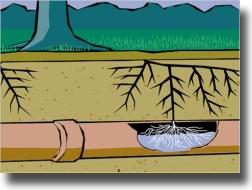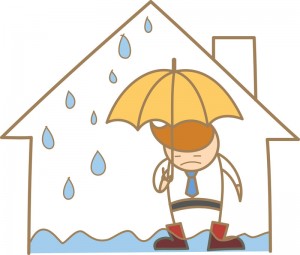Monthly Archives: July 2013
We’ve all heard the saying “If it ain’t broke, don’t fix it”. And more often than not, that is pretty sound advice here in Providence, Warwick, and throughout Rhode Island.
But when it comes to your home – and the plumbing that runs through it – we believe that an ounce of prevention is worth more than a pound of cure. And one way to prevent costly emergency plumbing repairs is through regular maintenance, including a video plumbing drain and sewer inspection.
A video inspection can uncover things about your plumbing lines that a routine inspection can’t. As a small camera attached to a flexible cable is pushed through a drain pipe or sewer, the camera operator can easily see any obstructions or damage to plumbing pipes, including:
- Sediment build up that, over time, can partially close pipes and restrict water flow
- Cracks and corrosion due to outdated material, especially in older homes
- Damaged sewer line due to root infiltration
- Off-set pipes caused by shifts in soil
- Leaking caused by broken seals between pipes
The information gathered during a video inspection is useful for several reasons. When planning a bathroom addition or kitchen expansion, a video inspection can tell you whether the current plumbing system can handle another sewer line.
If you’re thinking of buying a home, the information gathered can uncover hidden problems that could turn into expensive repairs for potential buyers.
And of course, if you’re dealing with low water flow, toilets that constantly back up, or sinks that repeatedly clog, a video inspection can accurately pinpoint the cause – and location – of the problem.
So, how’s the water flowing at your house? If it’s on the sluggish side or you have a flat-out blockage, contact Almeida today for fast and reliable results. We guarantee your complete satisfaction.
401-273-0040
Click here to request a quote or schedule service now
Did you know that common household water leaks can waste up to 10,000 gallons of water a year? A single faucet leaking 20 drips per minute wastes approximately 694 gallons of water a year all on its own. That’s enough water to do 17 loads of laundry in a typical top loading washing machine.
And that’s for water leaks you can readily spot and fix. But what happens when they’re not so easy to spot, as when water leaks behind your refrigerator from a cracked ice maker supply line? If the leak is small enough, it could be a good long time before you notice it. And the smaller the amount of puddling, the worse the problem might be if water is seeping through the flooring where it can eventually cause structural damage, problems with mold and mildew, and more.
In short, every leaking faucet or sign of a water leak should be treated with a sense of urgency. If you’re the handy type and have the right set of tools, you can resolve several leaking water problems on your own, starting with your kitchen sink faucet.
The first step is to determine what kind of faucet you have. Older, compression style faucets are prone to leaks with years of usage due to seal and washer corrosion. While less likely to leak, disk, ball, and cartridge faucets can cause problems once the O ring starts to break down or isn’t correctly installed in the first place.
Here are some common leaking faucet problems, and what it takes to correct them:
- Loose adjusting ring and packing nuts. If you experience a leak near the handle of the faucet, it could be due to loose parts. Tightening the packing nuts should eliminate that leak.
- Worn washer. If you notice water dripping from the spout, you might need to replace the washer in a compression style faucet. Each time a faucet is turned on, the washer is forced against the valve seat, and over time can cause the washer to wear out.
- Corroded valve seat. Another component of compression faucets, the valve seat can corrode over time due to water sediment build-up. Regular cleaning of the valve seat can keep the faucet flowing smoothly.
- Worn out seals. Similar to the valve seat, water sediment can corrode inlet and outlet seals in a faucet. While cleaning the seals can help prolong their use, worn seals do need to be replaced.
- The O ring. The O ring is the small disc attached to the stem screw that holds the faucet handle in place. With years of continual use, the O ring can become loose or worn out, resulting in a leak near the handle. In most cases, the O ring needs to be replaced.
For water leaks that aren’t so easy to fix or, worse yet, can’t readily be located, contact the plumbing professionals at Almeida Plumbing, Heating & Cooling for prompt and decisive action. We’ll determine the source and extent of the problem, advise you on the proper course of action, and make the necessary repair or replacement after presenting you with a guaranteed upfront price. Contact us to schedule service today or any time at all.
401-273-0040
Click here to request a quote or schedule service now




